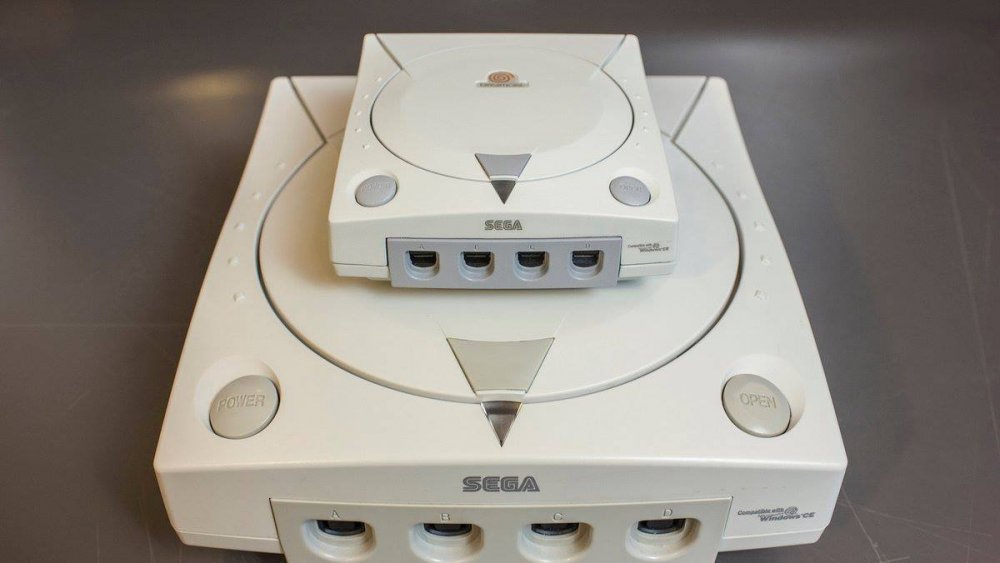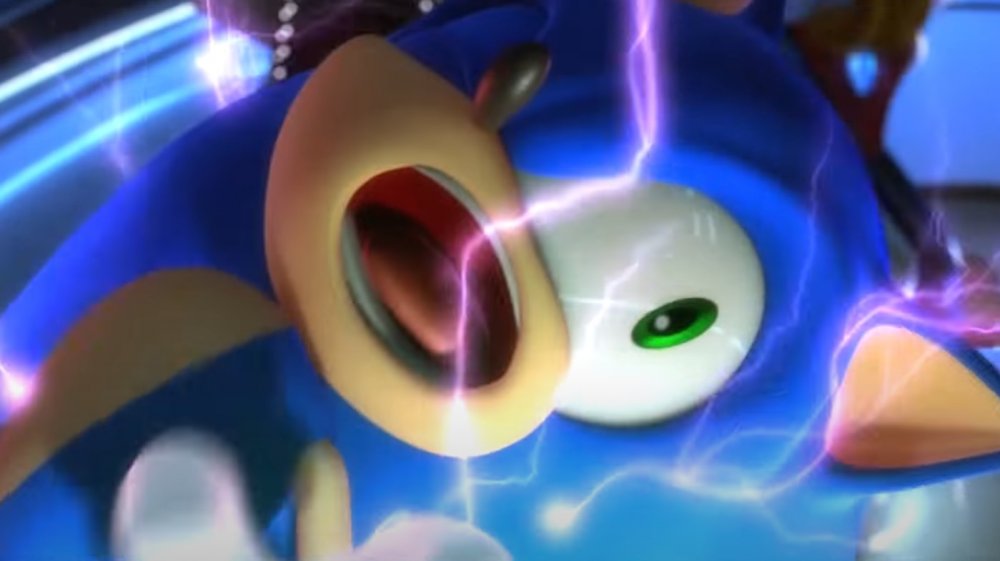Why We'll Probably Never Get A Sega Dreamcast Mini
We may receive a commission on purchases made from links.
In 2016, Nintendo announced the NES Classic Edition. Also known as the NES Mini, this miniaturized console packed 30 classic games into its tiny frame, and it sold 2.3 million copies in five months. This popularity demonstrated there was a market clamoring for mini-me consoles, so Nintendo followed up with the SNES Classic Edition (a.k.a. the SNES Mini). Likewise, Sony and Sega jumped on the bandwagon with the PlayStation Classic and SEGA Genesis Mini. And ... that's it so far.
Despite the hype behind the mini consoles, Nintendo has yet to develop a long-desired Nintendo 64 Classic. Sony hasn't announced the PlayStation 2 Classic, and Sega — despite finally reentering the console market — has not revealed the Sega Dreamcast Mini. Even though the Dreamcast is a cult classic console, Sega has not announced any plans to send the device through the shrinky-dink machine, and the company probably never will. Here's why.
Sega may not want to reopen old wounds
The Dreamcast was hailed as ahead of its time, but its birth was anything but smooth. Unlike the NES, SNES, Genesis, and PlayStation Minis, all callbacks to crowd-pleasing consoles that dominated the market, the development of the Dreamcast Mini would probably just remind Sega why it left the console race to begin with.
When the Dreamcast initially launched in Japan, it received what former Sega of America head Peter Moore dubbed a "tepid, luke-warm reaction." Even if there had been a huge demand, manufacturing problems may have gotten in the way. Sales numbers picked up when the console released in America, but demand hit a wall when the PlayStation 2 released. Essentially, this combination of issues forced Sega to choose between two options: keep selling the Dreamcast and hope the company didn't go bankrupt, or save face (and money) and leave the console business.
However, the Dreamcast isn't just a sad reminder of when Sega realized it couldn't continue making consoles — it is also a reminder of when several publishers blacklisted the company. EA led the charge to abandon the Dreamcast, and other companies followed the publisher's lead. Retro gamers might have fond memories of the Dreamcast, but for Sega, the console was a waking nightmare that only ended with its discontinuation.
The Dreamcast Mini might not be cost friendly
To date, all mini consoles have been "inexpensive" officially licensed plug-and-play emulators. Each has sold for around half the launch price of their respective namesakes, but those were simpler consoles, the opposite of the Dreamcast.
The Dreamcast was no run of the mill console. It included features that other systems wouldn't implement for years — if ever. Case in point, the Dreamcast's visual memory units (VMUs), and modem. The VMU was a combination of memory card and handheld console, complete with buttons and LCD screens. The device provided extra feedback for certain Dreamcast titles, such as character health in Resident Evil games, and VMUs went full Tamagotchi for titles such as Sonic Adventure. Meanwhile, the Dreamcast was also the world's first console with internet connectivity. While most of its games didn't use the modem, some of its more notable titles did, including Phantasy Star Online.
Since the VMU and modem were key to the Dreamcast experience, a Dreamcast Mini would ideally have to include them, which is where things get pricey. The VMU would increase costs by around $20 since it would function like a miniaturized Tamagotchi, while the modem might add around $30 as it would have to be wireless. Together, a Dreamcast Mini would probably cost $150-$170, which some might find too expensive for a plug-and-play.



